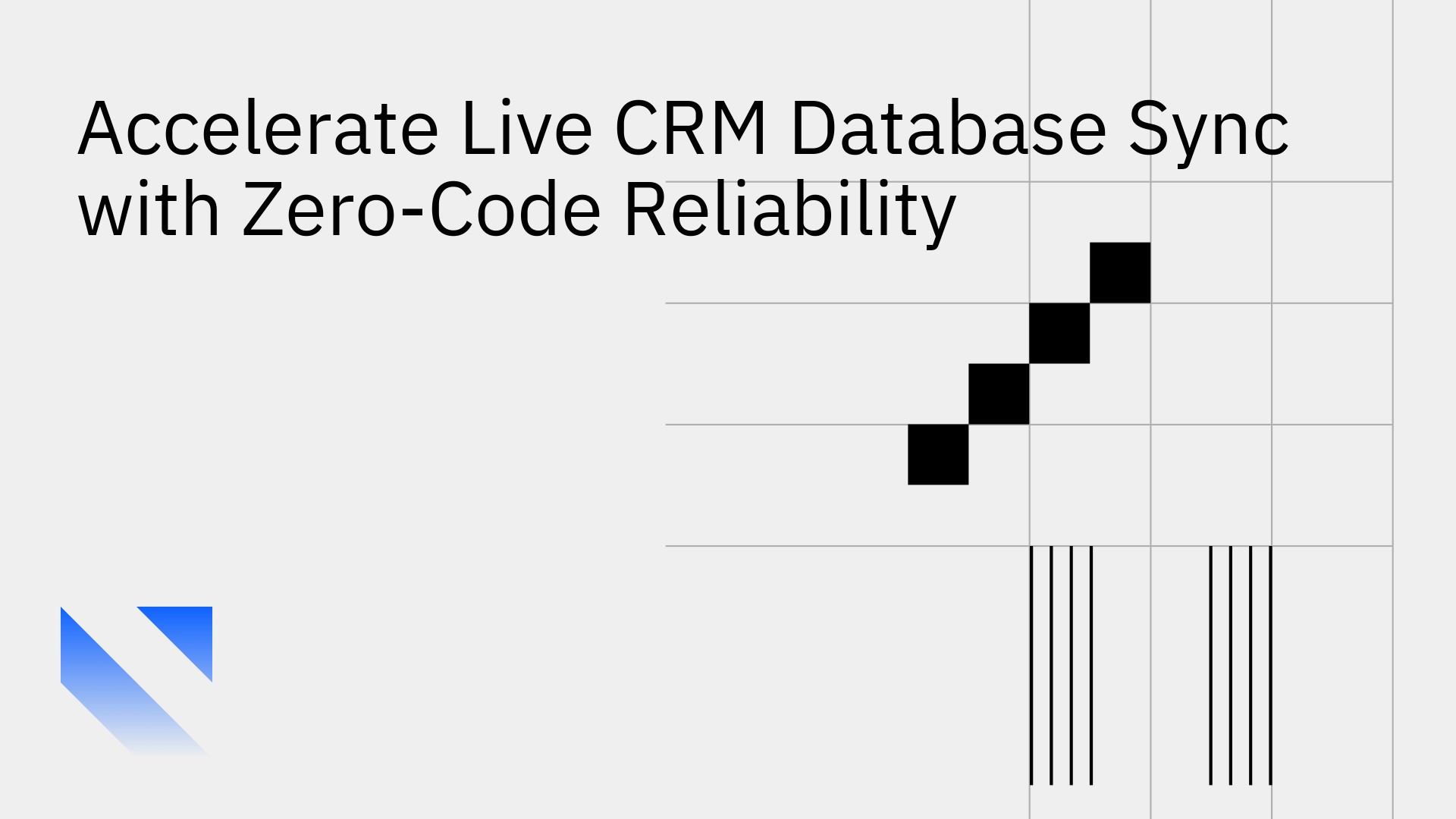

In today's fast-paced business environment, teams across sales, marketing, and operations depend on accurate, up-to-the-minute CRM data to make critical decisions.
However, keeping this data perfectly synchronized with other business-critical databases remains a significant technical challenge.
When data sync fails or is delayed, the consequences ripple across the organization, leading to operational inefficiencies, flawed analytics, poor customer experiences, and missed opportunities. Relying on outdated information leads to poor targeting and ineffective outreach, especially when powering automated systems like AI SDRs [1].
The solution is a live CRM database sync a modern approach that guarantees data consistency across all systems in real time. This article explains how zero-code platforms can provide reliable, real-time CRM data synchronization, eliminating the need for complex, resource-intensive engineering projects.
For years, organizations have relied on traditional methods like manual CSV uploads, nightly batch processes, and custom-coded API integrations. While once sufficient, these approaches are no longer adequate for modern operational needs.
Batch processing, which runs on a schedule, inherently creates data gaps. This means your teams are often working with information that is hours or even a full day out of date. This delay cripples agile decision-making, as insights from yesterday's data are insufficient for today's real-time operations [2].
Building and maintaining custom integration scripts is a major drain on engineering resources. While custom code offers ultimate flexibility, it comes at the high cost of fragility and constant maintenance. Developers must contend with complex API documentation, rate limits, schema changes, and robust error handling—"dirty plumbing" work that is costly, time-consuming, and diverts valuable engineering talent away from core product innovation.
Manual data entry and simplistic one-way syncs are breeding grounds for human error, duplicate records, and conflicting information. When your CRM and database are out of sync, it erodes trust in your data and forces teams into time-wasting manual reconciliation efforts. These are common challenges when trying to sync a CRM with a database without a purpose-built solution.
Live CRM database sync is the continuous, bidirectional, and near-instantaneous replication of data between a CRM platform (like Salesforce or HubSpot) and a database (like PostgreSQL or Snowflake).
At its core, this means that any change a new contact, an updated deal stage, or a deleted record, made in one system is immediately and automatically reflected in the other. This ensures perfect data alignment across your entire tech stack at all times, a stark contrast to batch jobs that run on a fixed schedule.
Crucially, modern platforms have made this powerful capability accessible through a "zero-code" or "no-code" approach. This empowers business and operations teams, such as RevOps and Data analysts, to build and manage robust data pipelines without writing a single line of code.
Stacksync is a data sync and workflow automation platform purpose-built for real-time, two-way data synchronization. We designed our platform on three core pillars: speed, reliability, and simplicity, enabling you to build enterprise-grade integrations in minutes, not months.
Stacksync processes data changes in milliseconds, providing the real-time performance required for mission-critical operations. Our architecture is designed to scale effortlessly, whether you're syncing a few thousand records or over 100 million. The platform intelligently manages API interactions to respect rate limits on connected systems like Salesforce or HubSpot, preventing service disruptions and ensuring smooth, continuous data flow.
Get your live CRM database sync running with our simple, three-step setup process:
This entire process requires no coding or deep API knowledge, empowering your team to take control of your data infrastructure. For technical teams that require more governance, Stacksync also supports configuration-as-code, providing the flexibility of a low-code tool with the rigor of an engineering framework.
Silent sync failures can corrupt data and break trust. Stacksync is engineered to prevent this with transparent, built-in reliability. Our Issue Management Dashboard provides real-time visibility into every data flow, so you always know the status of your syncs. If an issue does arise, you can receive instant alerts via Slack or email and use our one-click "retry" or "revert" functions to resolve it immediately. This focus on automated and reliable sync ensures your operational data is always consistent and trustworthy.
By implementing a live CRM database sync, you unlock powerful capabilities that drive significant business value.
Unify data from your CRM (e.g., Salesforce), ERP (e.g., NetSuite), and production databases (e.g., Postgres) into a central analytics warehouse like Snowflake. This creates a complete, up-to-the-second view of every customer interaction, enabling proactive engagement and deeply personalized experiences. This real-time consolidation of data from various sources is a cornerstone of modern customer intelligence [3].
Combine live sync with data event triggers to automate complex business logic that spans multiple systems. This allows you to build powerful workflows that react instantly to changes in your data.
Example:
With two-way sync and data event triggers, this entire process happens automatically in seconds, without any custom code.
AI models and automation tools are only as effective as the data they are fed. A live sync ensures that your AI SDRs, marketing automation platforms, and other sales tools always operate on the freshest possible data. Whether you're using an AI assistant to update records or an automated platform for lead nurturing, real-time data is the key to accuracy and relevance [4].
The era of slow, unreliable, and resource-intensive batch syncing is over. For data-driven companies, live CRM database sync is no longer a luxury but a competitive necessity. Zero-code platforms like Stacksync have made this powerful technology accessible, reliable, and easy to implement for any organization ready to move beyond outdated data practices.
By embracing this modern approach, you empower your teams with the real-time information they need to operate efficiently, make smarter decisions, and deliver exceptional customer experiences. As a leader in the new paradigm of data integration, Stacksync is here to help you make the transition.
Ready to see it in action? Start your 14-day free trial and experience the power of live sync firsthand.